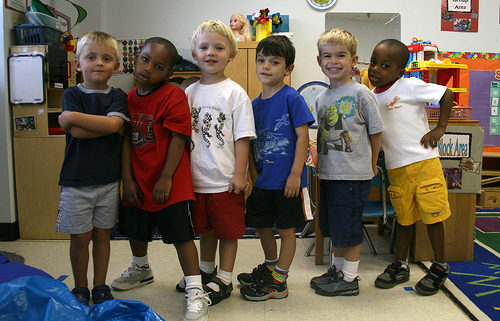
Reprinted from http://www.educationdive.com
U.S. Secretary of Education John King’s voice wavered slightly during the July 27 conference call, as he recounted his personal battles with poverty and homelessness.
“I know schools can save lives, because schools saved mine,” King said. “Public school teachers gave me a sense of hope, created an environment that was structured and supportive. I understand school can be the difference as a safe and supportive place for students facing homelessness.”
King was addressing members of the media about new proposed policies under the Every Student Succeeds Act, which will support mandated local liaisons in school districts to help identify and offer resources to students who classify as homeless. They will also help to clarify the unique needs of the rising homeless student population, which includes more than 1.3 million children throughout the country. More than half of the nation’s public school children were low-income in 2013.
He also indicated that the Obama Administration has committed increases in funding to support programming support for homeless students — about $85 million for the next academic year. But many wonder if the federal government’s support will be enough to solve the growing crisis, with far reaching impact on educational service delivery and performance metrics.
Social justice outside of education typically incorporates public views on inequalities in housing, income, and criminal justice administration. But for the children growing up in environments where these challenges impact their daily lives, the learning outcomes typically create another vicious cycle of divesting — through suspensions, expulsions and negative classroom experiences.
“A large number of students coming to school from poverty live in a chronic state of stress, with symptoms mimicking those of ADHD,” said Eric Jensen, an author and researcher who has consulted with secondary systems nationwide on strategies to educate students from impoverished communities. “So they get labeled as discipline problems, when really, they are living under chronic stress.”
Jensen said to combat the impact of poverty in the classroom, teachers should have way more empathy before judging students’ ability and work to avoid judging students altogether.”That’s easier said than done, but teachers must understand kids don’t choose parents, neighborhoods, DNA. So when they are being impulsive, challenging authority — these are symptoms that have been in literature for more than 30 years,” he said.
Biochemically, Jensen said, elevated levels of cortisol can destroy brain cells. This change creates risk factors for depression, anxiety and anger, all which can be enhanced by environmental factors like unhealthy living conditions, violence or drug abuse in the home.
These factors can limit exposure to complex language, listening and responding, and slows the brain’s capacity to handle processing, like rapid speaking.
To solve the issues, Jensen recommends schools emphasize relationship building and cultures of respect and encouragement for students. While it is a difficult proposition to ensure quality teachers at every level throughout a secondary career, Jensen said that five years of holistic learning and accounting for the effects of poverty, can all but eliminate their impact.
“It is a long-term process because what counts is how many minutes per day are they in a metabolic state. If I can keep them confident for five to six hours a day, then life is good. Five years in a row of above average teaching, and you can reduce the stressors among students and teachers that begin to make way for cognitive development and essential learning skills.”
Click to read more..










